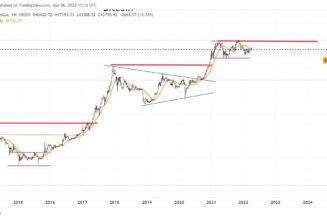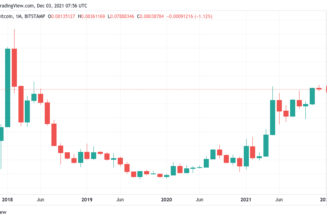
Housing investment, though, plunged at a 26 percent annual pace, hammered by surging mortgage rates as the Federal Reserve raises borrowing costs to combat chronic inflation.
The outlook for the overall economy has darkened. The Fed has raised interest rates five times this year and is set to do so again next week and in December. Chair Jerome Powell has warned that the Fed’s hikes will bring “pain” in the form of higher unemployment and possibly a recession.
The government’s latest GDP report comes as Americans, worried about inflation and the risk of recession, have begun to vote in midterm elections that will determine whether President Joe Biden’s Democratic Party retains control of Congress. Inflation has become a signature issue for Republican attacks on the Democrats’ stewardship of the economy.
With inflation still near a 40-year high, steady price spikes have been pressuring households across the country. At the same time, rising interest rates have derailed the housing market and are likely to inflict broader damage over time. The outlook for the world economy, too, grows bleaker the longer that Russia’s war against Ukraine drags on.
Last quarter’s U.S. economic growth reversed annual declines of 1.6 percent from January through March and 0.6 percent from April through June. Consecutive quarters of declining economic output are one informal definition of a recession. But most economists have said they believe the economy skirted a recession, noting the still-resilient job market and steady spending by consumers. Most of them have expressed concern, though, that a recession is likely next year as the Fed steadily tightens credit.
Preston Caldwell, head of U.S. economics for the financial services firm Morningstar, noted that the economy’s contraction in the first half of the year was caused largely by factors that don’t reflect its underlying health and so “very likely did not constitute a genuine economic slowdown.” He pointed, for example, to a drop in business inventories, a cyclical event that tends to reverse itself over time.
Higher borrowing costs have weakened the home market, in particular. The average rate on a 30-year fixed-rate mortgage, just 3.09 percent a year ago, is approaching 7 percent. Sales of existing homes have fallen for eight straight months. Construction of new homes is down nearly 8 percent from a year ago.
Still, the economy retains pockets of strength. One is the vitally important job market. Employers have added an average of 420,000 jobs a month this year, putting 2022 on track to be the second-best year for job creation (behind 2021) in Labor Department records going back to 1940. The unemployment rate was 3.5 percent last month, matching a half-century low.
Hiring has been decelerating, though. In September, the economy added 263,000 jobs — solid but the lowest total since April 2021.
International events are causing further concerns. Russia’s invasion of Ukraine has disrupted trade and raised prices of energy and food, creating a crisis for poor countries. The International Monetary Fund, citing the war, this month downgraded its outlook for the world economy in 2023.
[flexi-common-toolbar] [flexi-form class=”flexi_form_style” title=”Submit to Flexi” name=”my_form” ajax=”true”][flexi-form-tag type=”post_title” class=”fl-input” title=”Title” value=”” required=”true”][flexi-form-tag type=”category” title=”Select category”][flexi-form-tag type=”tag” title=”Insert tag”][flexi-form-tag type=”article” class=”fl-textarea” title=”Description” ][flexi-form-tag type=”file” title=”Select file” required=”true”][flexi-form-tag type=”submit” name=”submit” value=”Submit Now”] [/flexi-form]









